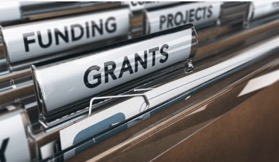
SR&ED program: Current landscape and looking ahead
By Peter Evagelou, manager, R&D & government incentives, Grant Thornton LLP
Electronics CRA funding government Grant-Thornton R&D SR&EDThe Scientific Research and Experimental Development (SR&ED) program is the largest source of federal support for Research and Development (R&D) in Canada. Each year, more than 16,000 claimants receive over $3 billion in tax credits from the program, many of which are small to medium sized businesses.
Background
The SR&ED program has been around in different forms for decades, evolving based on government mandates and the economic landscape at the time. As early as 1944, companies could deduct an amount equal to 100% of current expenditures related to scientific research from their taxable income, and in 1963, a formal definition of “scientific research,” was introduced into income tax legislation Although the wording isn’t identical to the definition contained within the Income Tax Act today, many parallels can be drawn.

Source: Getty
For years, organizations such as the Council of Canadian Innovators have advocated for changes to streamline and modernize SR&ED, including updates to:
- Broaden the definition of eligible expenditures to include the preparation and examination phase of protecting intangible assets (i.e., intellectual property).
- Ensure that SR&ED explicitly covers commercialization and continuous improvement activities.
- Develop education tools and resources to support auditors that work with data-intensive and advanced technology companies
The Government of Canada has announced that it will launch consultations in 2024 on modernizing SR&ED with a focus on how to better target the program to ensure that the support helps to position Canada as an R&D leader (Update on federal innovation policies and initiatives – Canada.ca).
The federal government also noted that the Canada Innovation Corporation (CIC)—a funding agency announced in the 2022 federal budget to drive Canadian business investment in R&D—will need to be fully established before it takes over the National Research Council of Canada Industrial Research Assistance Program (NRC IRAP). The federal government stated that this transition should take place by no later than 2026-2027; however, this delay represents four years from when the CIC was initially announced, emphasizing the need for other R&D incentive programs to be streamlined and refined in the interim.
Challenges of the existing SR&ED program
The SR&ED program today has been criticized for having a high compliance burden and lengthy claim preparation process. Despite being a lucrative incentive, strict and complicated eligibility criteria make accessing the SR&ED program a significant barrier for many, sometimes discouraging companies with eligible costs from claiming altogether.
Given the sheer volume of claims received on an annual basis, the Canada Revenue Agency (CRA) does not have the resources to conduct a detailed review of each claim to assess whether it is ineligible or noncompliant.
The CRA has also stated that it commonly sees incomplete or incorrectly filled forms, lack of supporting documentation, not disclosing certain types of financial assistance, and disclosure of inaccurate information. Perhaps the most problematic for claimants is the lack of supporting documentation.
Getting support
This is where SR&ED consultants come in. As experts in the field, SR&ED consultants not only play a role in preparing and defending claims, but also informally as “frontline auditors”. According to the CRA, the best form of supporting documentation is contemporaneous—i.e., documentation that was generated as the SR&ED project was being carried out. Documentation that is dated, signed, and specific to the work performed are the best supporting evidence that you can provide. For larger claims where disputes on claim eligibility sometimes land in Tax Court, many judgements are made based on the contemporaneous documentation that was generated and maintained as the project occurred.
To ensure that you have a sufficient level of documentation available to support your claim in the event of a CRA review, you should:
- Implement project management software: There are several project management software systems available depending on your industry and the nature of your R&D work. For example, consider employing a system like JIRA, Confluence, Trello, and Basecamp to help you track projects as they occur.
- Use a time tracking system: Whether you update a simple excel sheet on a daily or weekly basis or use a more complex system like Harvest or Clockify, ask your team to track their activities throughout the year to effectively differentiate between tasks that are SR&ED eligible and those that are not.
- Conduct regular technical meetings and reviews: Schedule weekly or monthly meetings held by R&D staff. A dedicated notetaker should capture technological challenges being experienced, work that is planned or undertaken to overcome those challenges, and any key learnings or takeaways from the experimentation/testing conducted.
Takeaway
Ultimately, no two companies are exactly alike so there isn’t a one size fits all solution that can be applied. Since the CRA doesn’t prescribe certain forms of documentation that must be available, your approach should be sufficient once you provide a reasonable methodology that supports how the expenditures claimed were calculated and include an adequate level of documentation to support the methodology.
————————
Grant Thornton LLP is a leading Canadian accounting and advisory firm providing audit, tax and advisory services to private and public organizations.
https://www.grantthornton.ca/service/tax/research-development-government-incentives/
